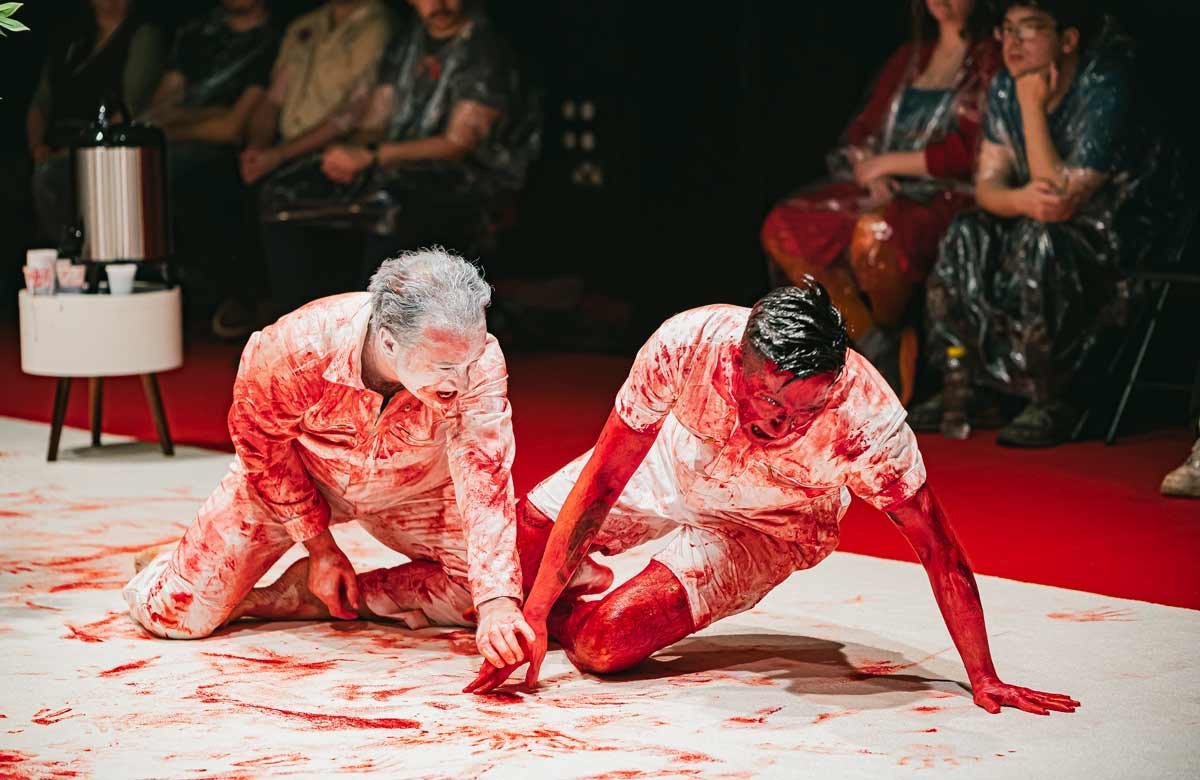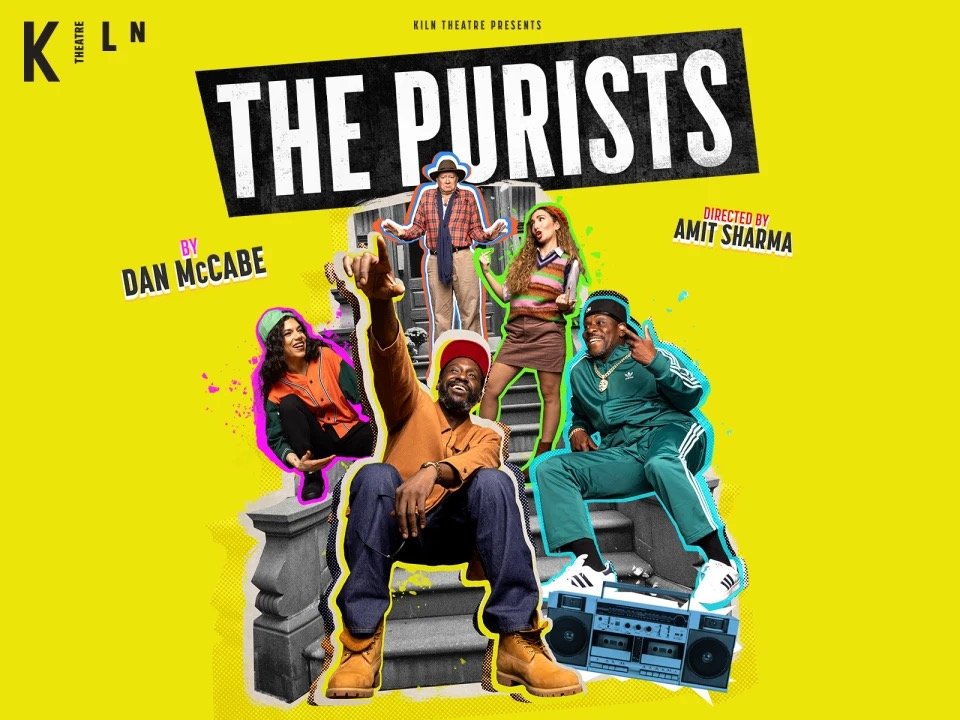“Blood Show” at Battersea Arts Centre
My Theatre Confidences 🤫
BLOOD SHOW
Battersea Arts Centre till 23 November
at a glance…
In a world where violence can often feel like wallpaper—something inescapable and unremarkable—Blood Show doesn’t just comment on our condition; it embodies it.
Through fight choreography that repeats, resets, and lingers on the aftermath, Chillingsworth doesn’t merely entertain or disturb; they confront us with an image, one splattered with the blood we so readily consume, and force us to recognize ourselves within it.
In Blood Show, artist Ocean Chillingsworth doesn’t simply ask us to watch violence—they ask us to feel its unsettling familiarity, to confront our own detachment and question how this detachment has changed us. Performed with relentless, choreographed intensity, this stark piece is an unapologetic exploration of the ways we’ve become increasingly numb to brutality. What is this doing to our empathy? Where has our sensitivity gone in a world where violence has become a recurring image, almost background noise?
Chillingsworth, an emerging voice in performance art, has made it their mission to push boundaries on our perception of the human body, its endurance, and its transformation through repeated trauma. The show is part of The Extinction Trilogy, alongside Monster Show and Nature Show, which explore the concept of human resilience—or fragility—in the face of modern horrors. In “Blood Show”, Chillingsworth goes straight for the jugular, asking whether our comfort with staged aggression has eroded our capacity to respond meaningfully to real violence and whether this passive consumption has become a way to endure the violence we often commit against ourselves.
The setup is deceptively simple: two performers engage in a relentless, cyclical fight, pouring through nearly 75 liters of fake blood throughout the performance. Each blow, each tumble, is carefully choreographed, but the repetition—seemingly endless—serves a deeper purpose than shock value. By framing violence as both performative and ceaseless, Chillingsworth creates a microcosm of our world, where our daily media consumption has transformed trauma into entertainment and brutality into a repetitive spectacle.
What’s provocative about Blood Show is not just the blood-splattered stage but the exhaustion it demands of us. After a while, the line between violence and spectacle blurs, and the impact begins to wear us down. This shift feels intentional, mirroring how relentless exposure to brutality through news, movies, and social media diminishes our emotional responses to real-world suffering. As we sit there, our passive consumption of violence becomes impossible to ignore. It’s as if Chillingsworth is asking us, “How long until you look away?”
At times, the pace of Blood Show feels slow and mechanical, which sometimes offered us a break from the intense visuals. It’s an almost physical experience, this cyclical push and pull between horror and calm, forcing us to feel our own responses as we navigate the space between discomfort and detachment.
Advertisement
Another intriguing layer emerges through the show’s haunting “ghost” figure (and yes, this is my personal take on it!): a shadow of the self, drifting through the violent scene like a fragment of the performers’ lost identity. This presence, hovering on the edge of the action, felt like the inner turmoil many of us experience in a society that often pits us against our true selves. Chillingsworth seems to suggest that beneath our numbness to outward violence lies a parallel, internal battle—a struggle to hold onto our authentic identity in a world that often demands compromise, conformity, and, at times, the sacrifice of who we are.
But perhaps most striking is the transformation that occurs by the end of Blood Show. After enduring the relentless cycles of staged violence, the mood shifts; the entire ordeal becomes absurd, even comical. We find ourselves laughing at the spectacle, at the blood-soaked performers locked in a seemingly endless loop. This laughter—almost involuntary—highlights a profound paradox. Here in our privileged, Western society, violence, which should horrify us, becomes something to consume, even laugh at. The laughter that bubbles up is a darkly ironic reflection of our desensitization, of how we’ve come to view violence as something theatrical, remote. We are reminded that we often find violence more entertaining than terrifying—a truth that Chillingsworth confronts us with head-on.
My Way of Looking at Theatre
You know, the more I think about it, the clearer it becomes that traditional theatre criticism has often been a tool for maintaining existing power structures.
It’s time to drop the privileged fancy talk around theatre and break free from star ratings.
Advertisement
Alice in Wonderland
Brixton House
21 November - 4 January
After an explosive argument with Mum at Brixton Underground Station, eleven-year-old Alice leaps onto the tube seconds before the doors hiss shut.
Trapped on a train speeding into Nonsense, surrounded by weird and wonderful passengers, and at the mercy of a Queen who won’t relinquish the controls, can Alice turn this train around?
Multi-award-winning company Poltergeist weave rap music together with the sights and sounds of Brixton into a hundred-mile-an-hour Christmas adventure. #AliceinBrixton




